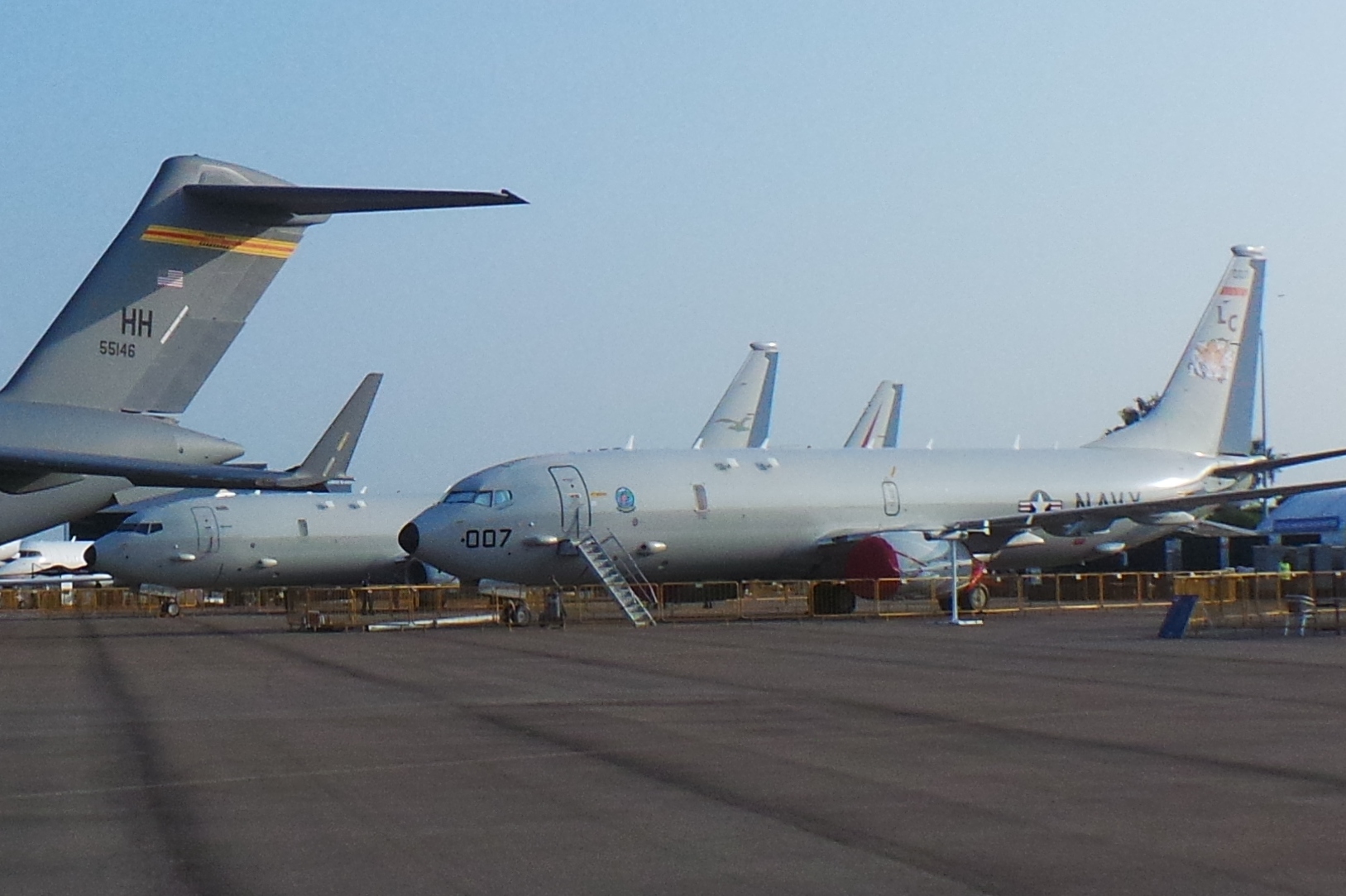
SINGAPORE — Following its inaugural deployment to the Asia-Pacific, the U.S Navy’s P-8A Poseidon Patrol Squadron 16 has been playing a key role not only in regard to operations in the region but also in cooperation and engagement activities with U.S partner nations.
In March 2014, two P-8 Poseidons were involved in the search for missing Malaysian Airlines flight MH370, along with two P-8I Poseidons of the Indian Navy. Although the search ultimately proved futile, the capability of the Poseidon was highlighted in the search. The Royal Australian Air Force became the third Poseidon operator in globally. Both the U.S and Australia have been conducting various engagements, the latest of this was during the recently concluded 2018 Singapore Air Show where a U.S. P-8 of VP-8 and an RAAF P-8 of No. 11 Squadron were present. USNI News spoke to Lt. Cmdr. Karl Murray, mission lead for the crew for the U.S. P-8 Poseidon of VP 8 in regard to an operator’s perspective on the squadron’s current deployment which is for a period of six months involving seven aircraft and approximately 270 personnel deployed to Kadena Airbase, Okinawa.
Lt. Cmdr. Murray said this is the Jacksonville, Fla. based squadron’s second deployment to the region. The squadron cycles between a year spent at their home base before going on deployment, “During that year, we know ahead of time where we will be deploying and we will focus our effort for that particular theatre, however we do train to operate anywhere around the world at the same time”.
One of the most significant factors in operating in this region was the heat, said Murray.
“The temperature that we get here affects how long we can do our missions out here, it affects the personnel doing the pre-flight and maintaining the aircraft and determines how we rotate personnel,” he said.
Having served before on P-3C Orions, Murray said that the P-8 was more reliable than the P-3 and its greater speed allows it to get on station faster in comparison to the Orions. Mission time is significantly higher for the P-8 due to this factor and on station time will increase even further once the mid-air refueling capabilities for the aircraft become operational.”
Part of the Navy P-8 deployments involves operating with partner nations. The interoperability exercises include the embarkation of non-U.S. military personnel aboard the P-8s to observe the missions and task carried out by the aircraft during the exercise.
During the Singapore Airshow, Boeing said in a briefing the company anticipated demand for the P-8 not only from existing users of the P-3 Orion looking for a replacement but also from countries in the Asia Pacific region given the increasing need by countries in the region for maritime domain awareness capabilities. Company representative Matt Carreon declined to specify specific countries. Improvements to the Navy P-8s under the Increment 3 phase of will soon be carried out including the addition of wideband satellite communication capability, in addition, in December, work was completed on the first P-8 aircraft to have a sixth workstation on board under the Increment 2 phase to better deal with the workload on the aircraft and all aircraft produced from now on will incorporate the sixth workstation while in-service aircraft will have them fitted in.
“We knew that need would come about eventually so we built in the space with the electrical points and cooling systems already there in the plane so we could just plug that in when it was required,” he said.
Carreon said that the advantage of the P-8 in being a derivative of the company’s commercial 737 Next Generation was that it could leverage efficiencies from the 737 NG line, he gave an example in where the 737 NG line went through an engine upgrade that improve fuel efficiency by 1 percent, “because the P-8 has the same engine, it got the same upgrade, Boeing didn’t pay for it, the U.S Navy didn’t pay for it but the P-8 got the upgrade because commercial aviation paid for it.”





